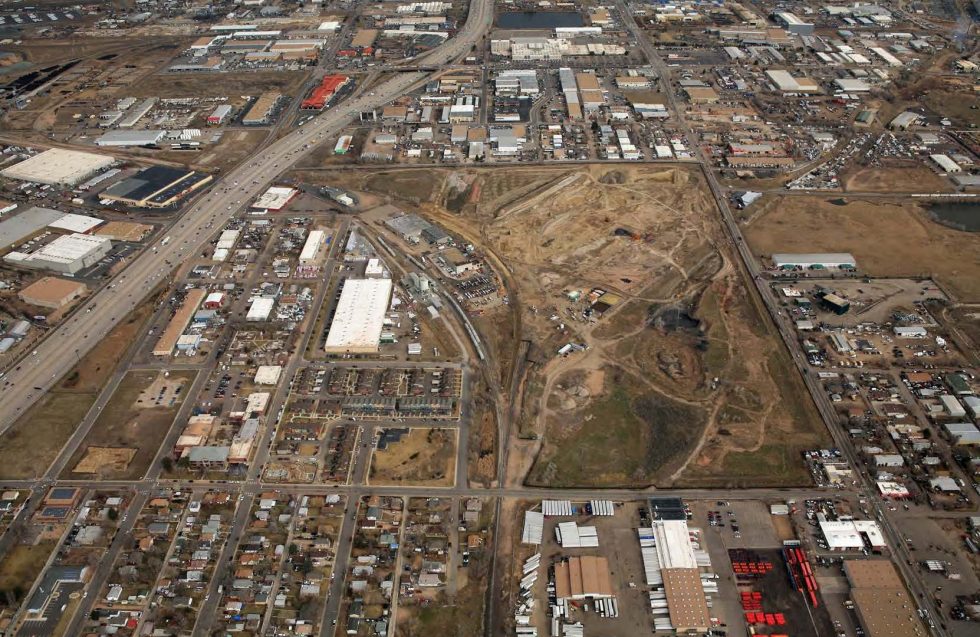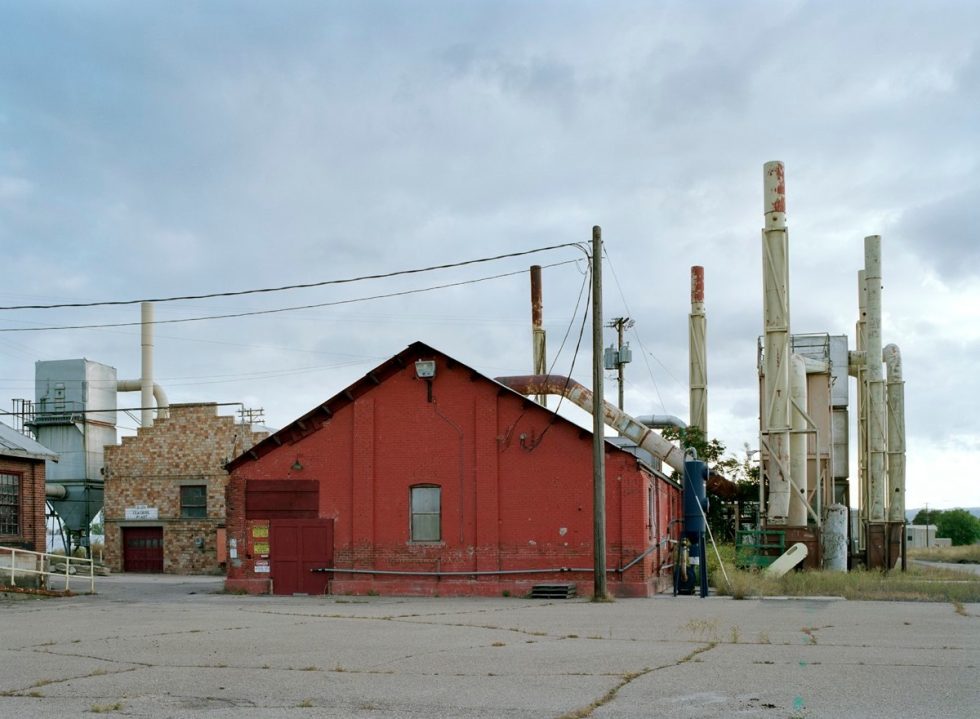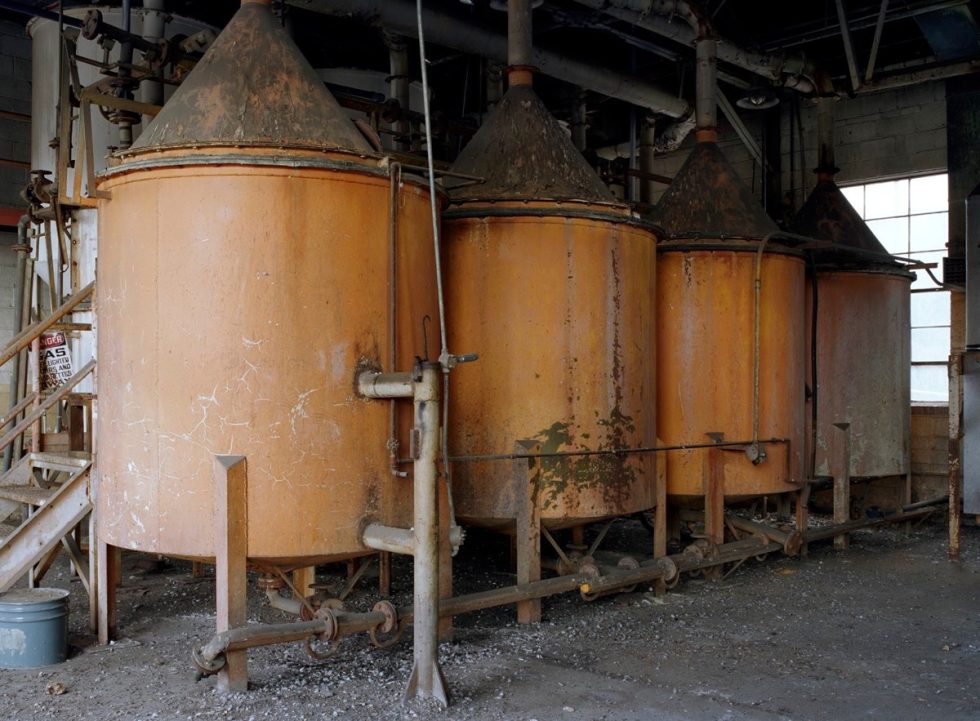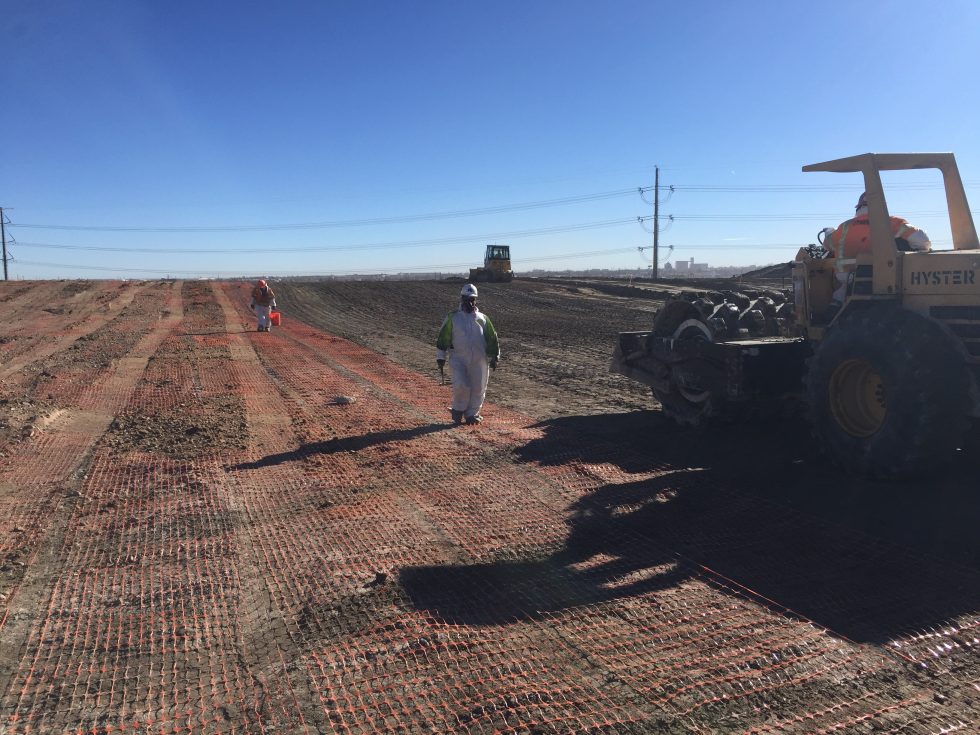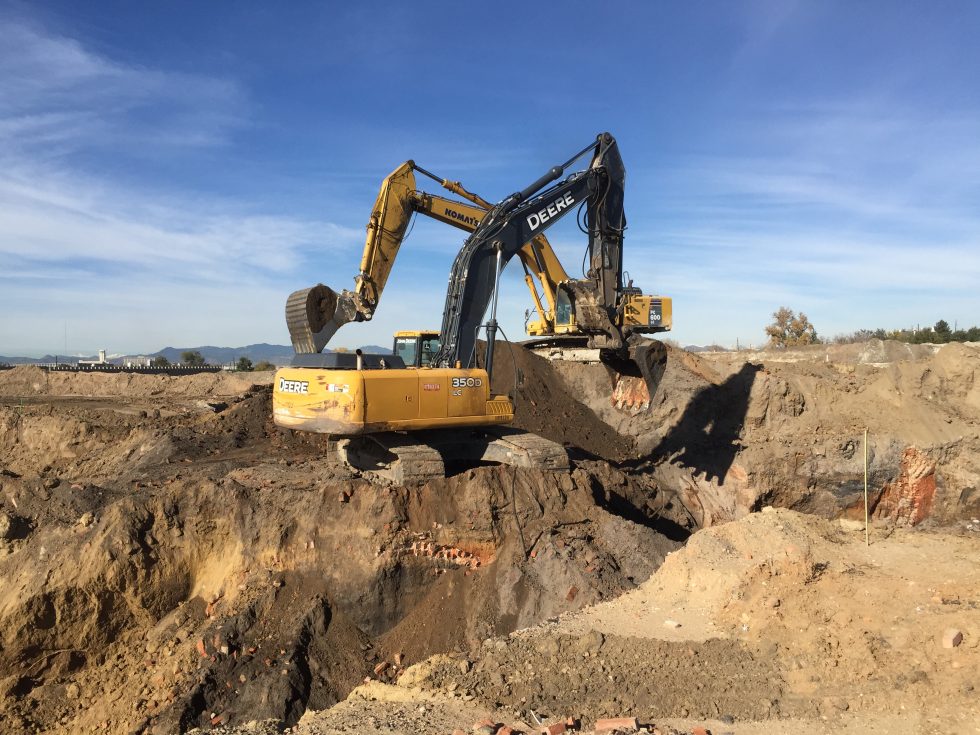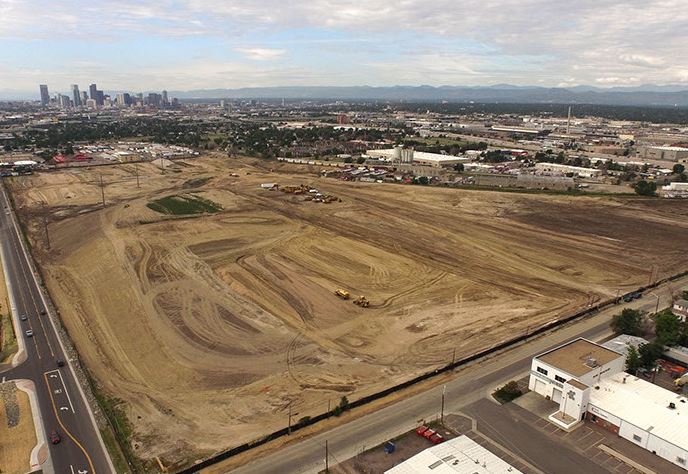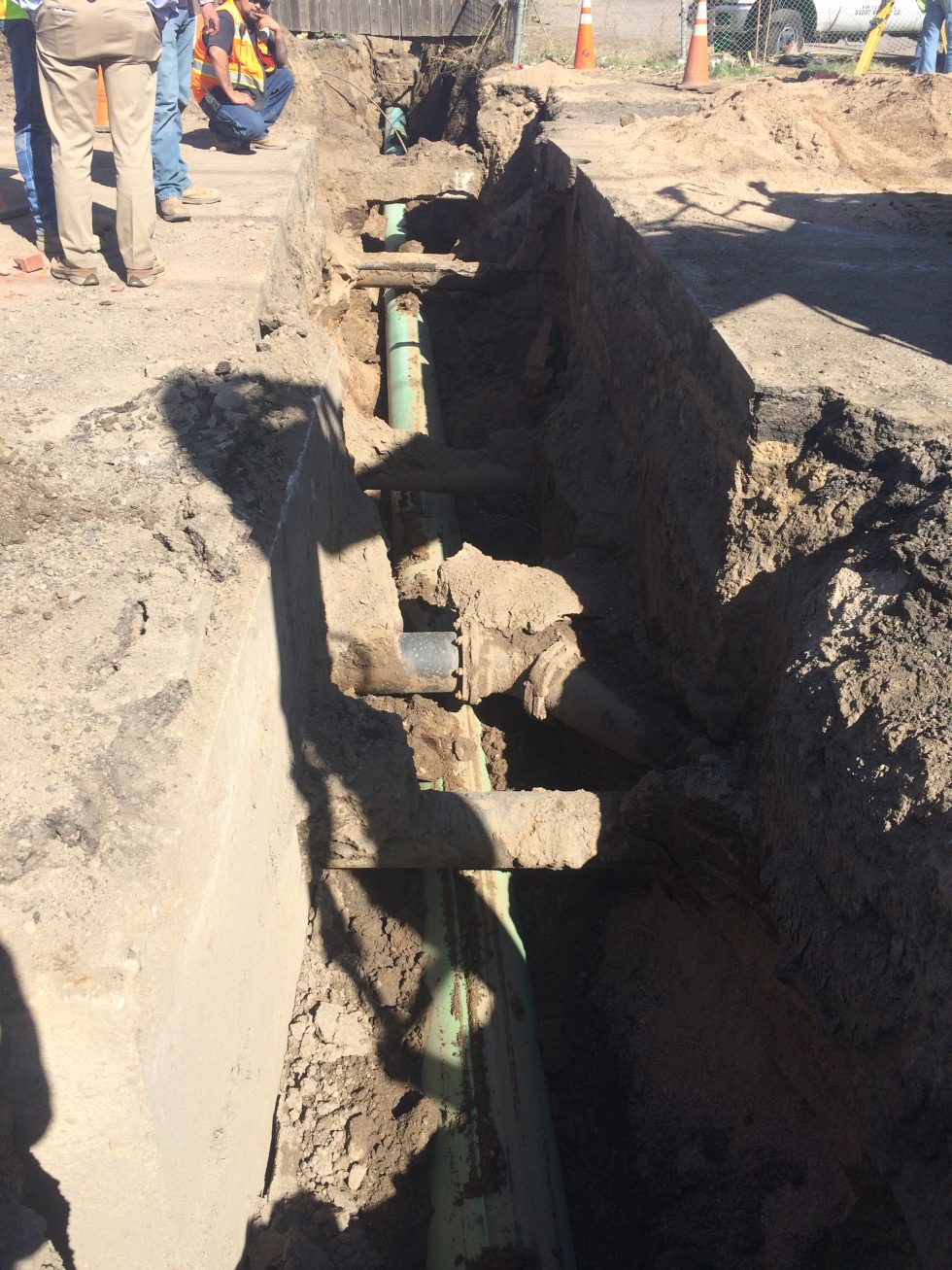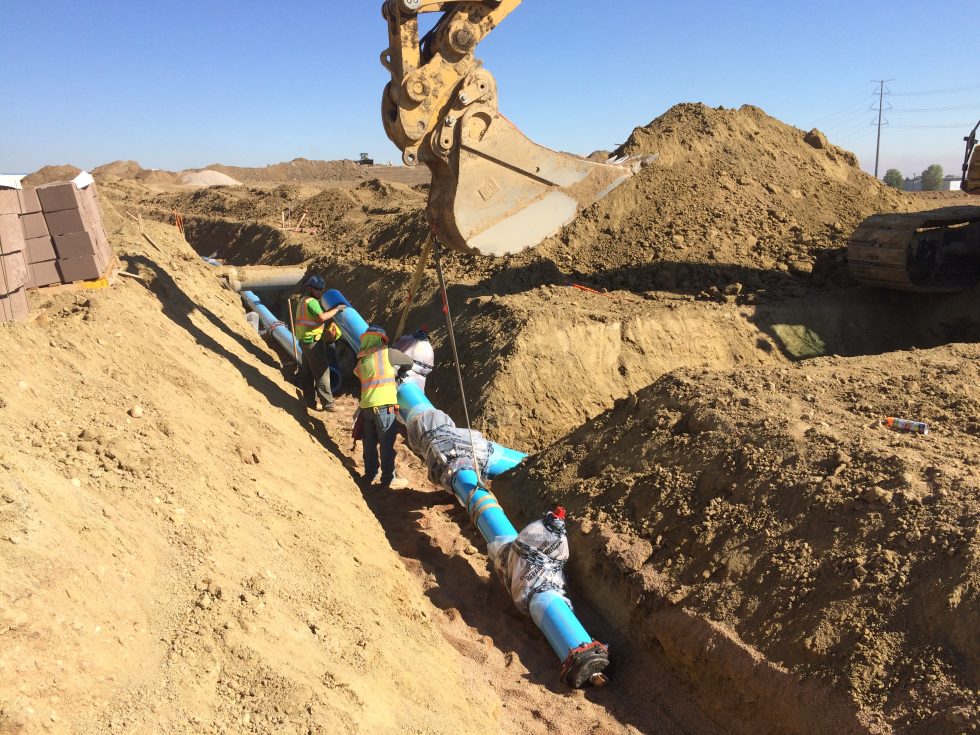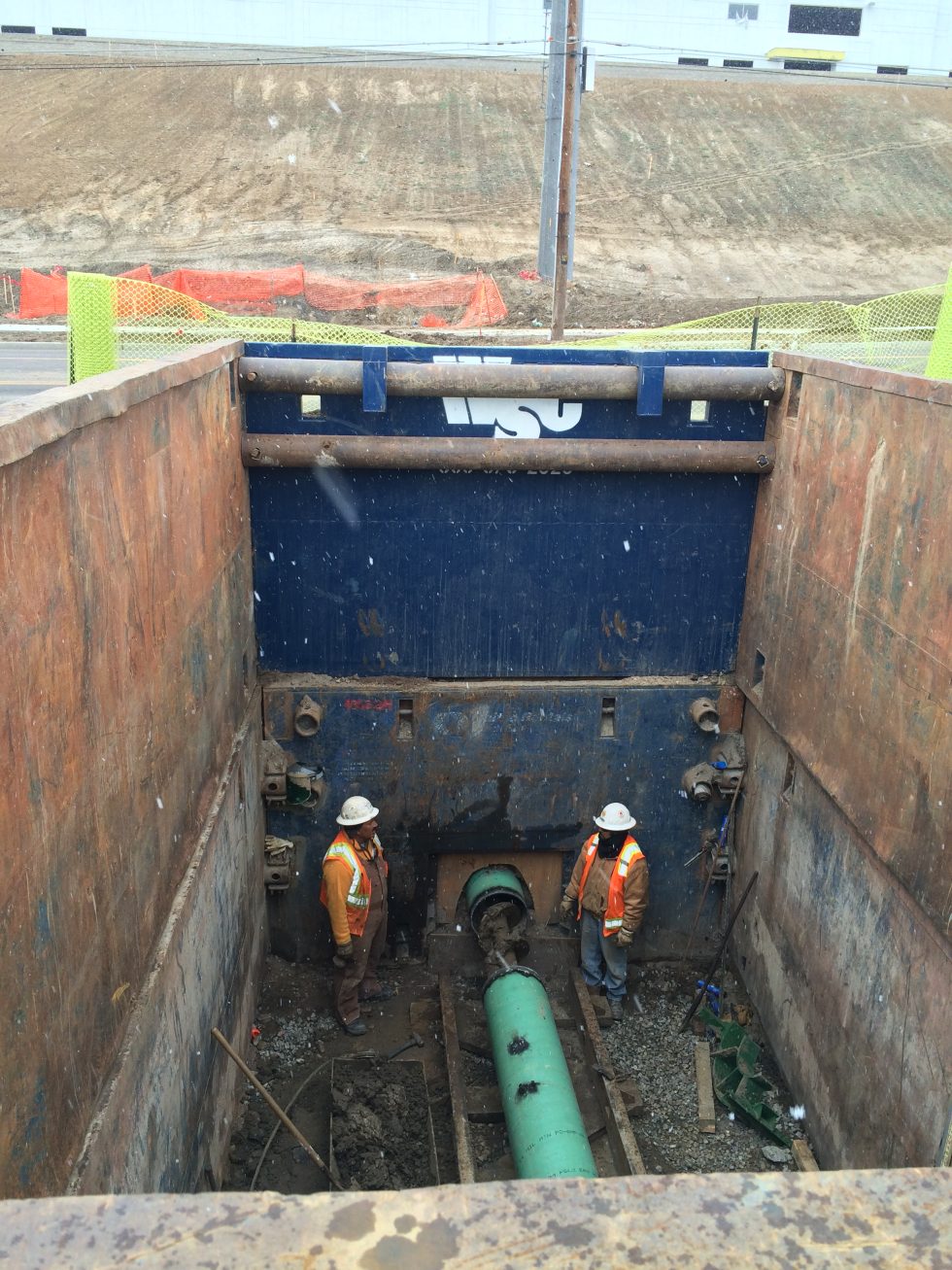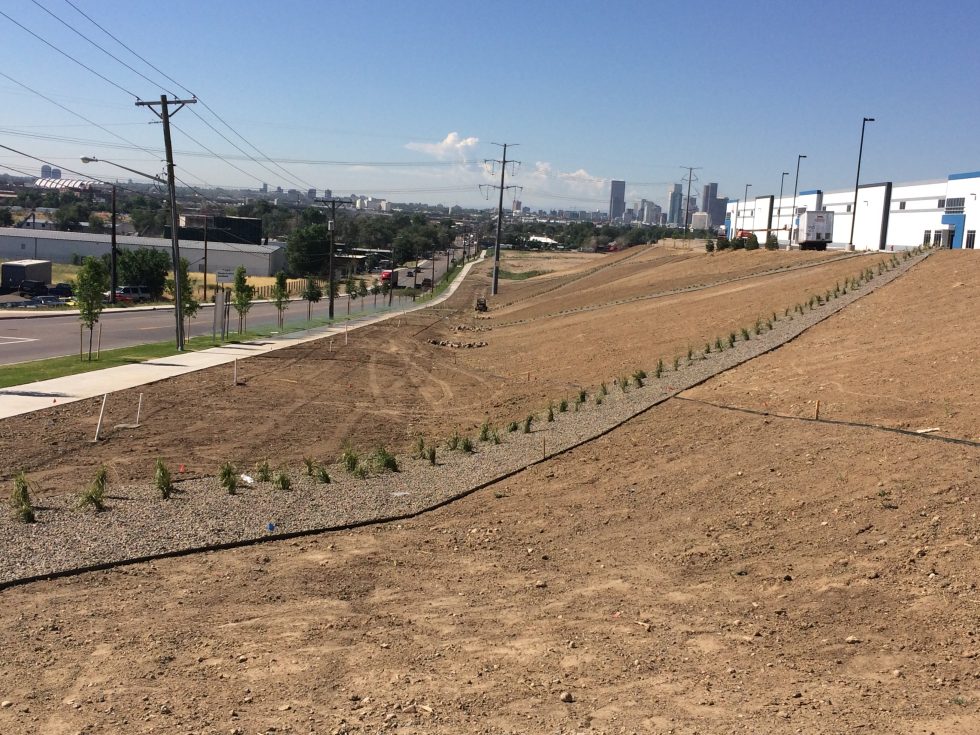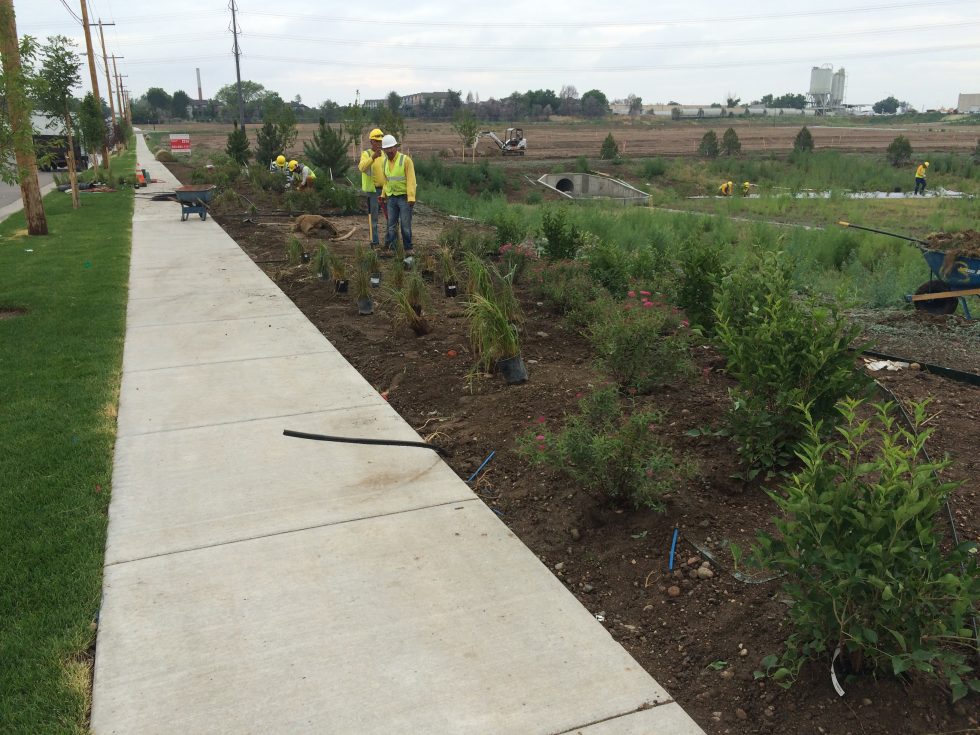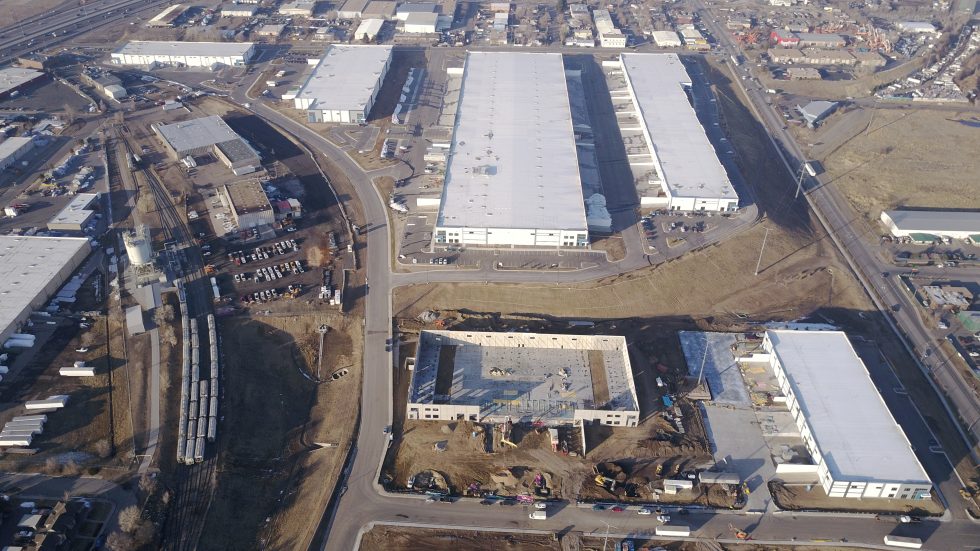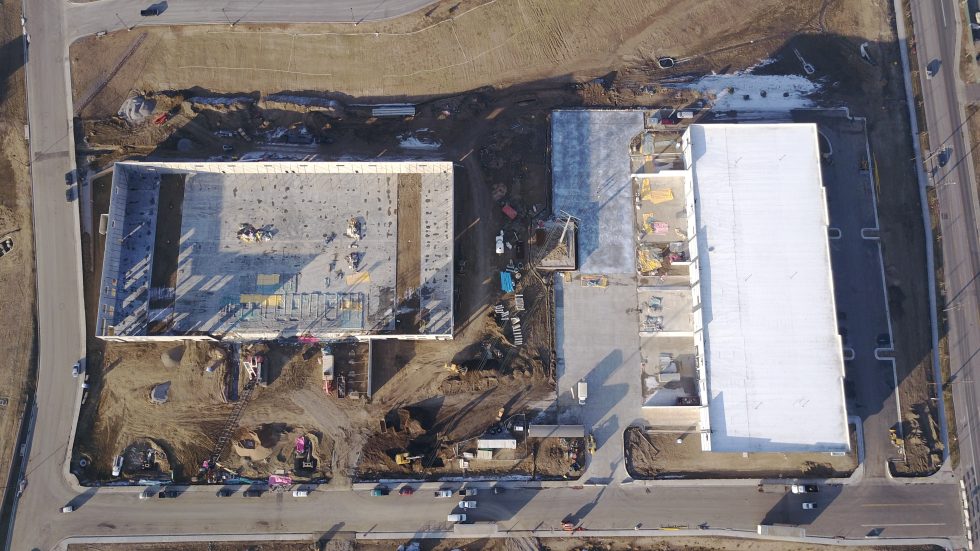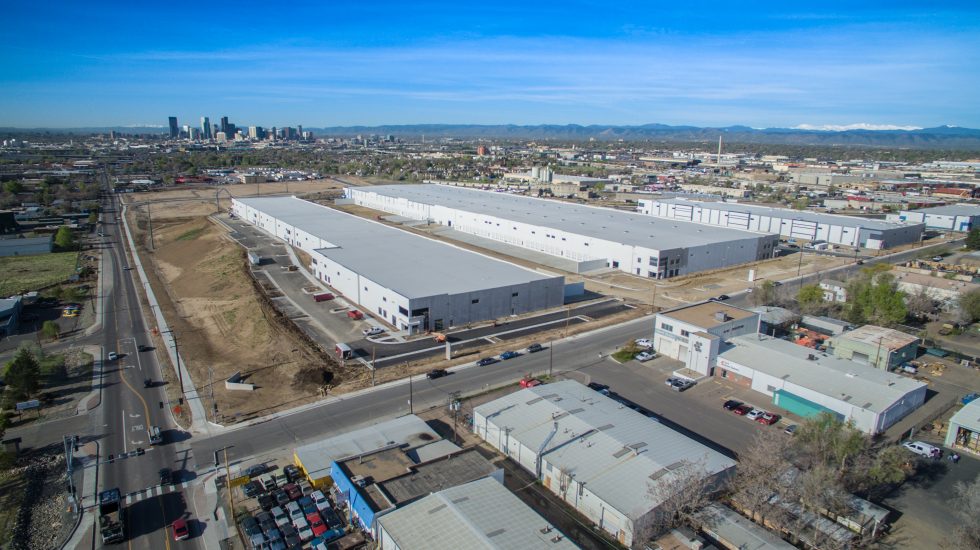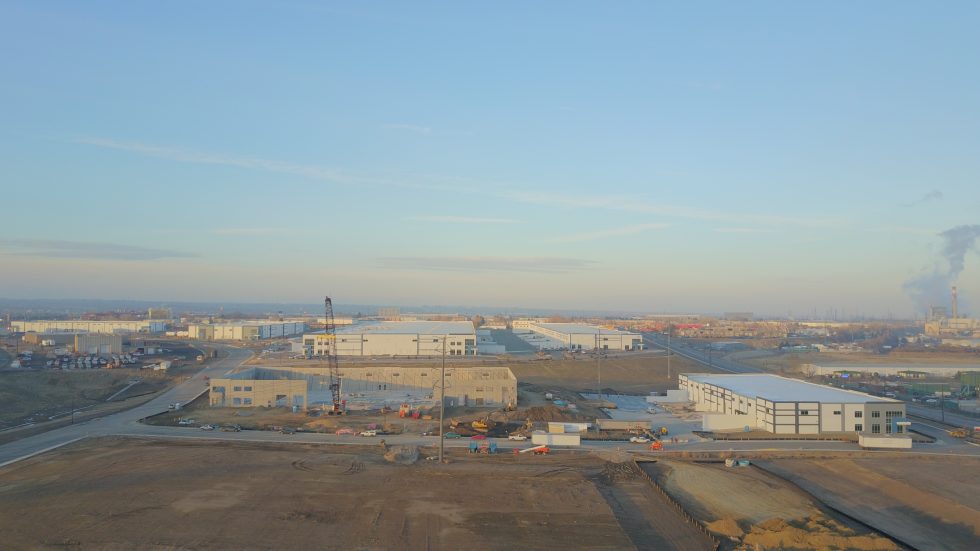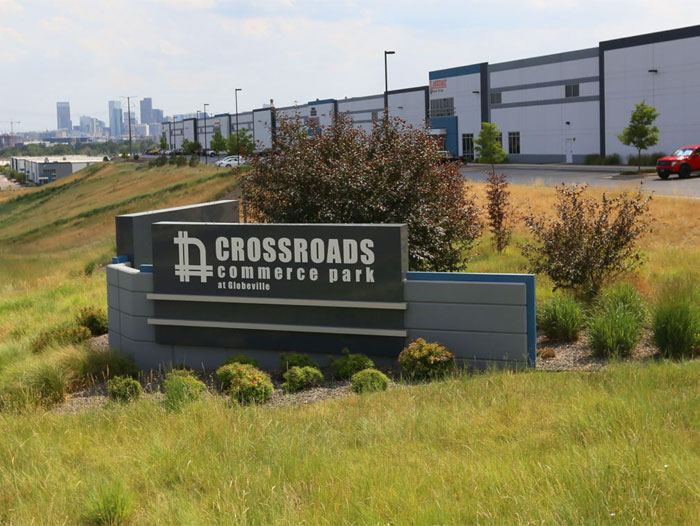ASARCO Globe Smelter,
Now Crossroads Commerce Park
Remediation of the 77-acre former ASARCO-Globe Smelter site into Crossroads Commerce Park, a master-planned 1M SF Class A industrial business park. Situated in both Adams and Denver counties, Crossroads Commerce Park borders Washington Street just north of I-70 and east of I-25. Only minutes away from downtown Denver, Crossroads Commerce Park is a premier infill location in the Denver metropolitan area, serving as a catalyst for economic development that is bringing back jobs to the historically industrial neighborhood of Globeville.
ASARCO Globe Smelter, now Crossroads Commerce Park
crossroadscommercepark.com
Originally developed in 1886 as a smelter during Colorado’s “Gold Rush,” the plant produced gold and then silver. Evolving alongside Colorado’s mining history, the plant produced a variety of metals over the course of the following 100 years. In 1901, the American Smelting and Refining Company (later renamed Asarco Inc., “Asarco”) bought the site, which was then known as the Globe Smelter. The “Globe Plant,” as it came to be known, and the workers who ran it, eventually gave birth to the name “Globeville,” which the neighborhood still carries to this day.
The plant was a major employer for a then young and growing Denver and the history of the site is interwoven with the history of the American industrial revolution and the Rocky Mountain West’s role in it. As with much of that period though, the mining and industrial engine that helped give rise to one of Denver’s oldest working-class neighborhoods, was also the source of the contamination that would ultimately cause the plant to close and help bring about the decline of a once great neighborhood. Fast forward to 2009, the plant had been shuttered, Asarco bankrupted, and the site transferred to the Asarco Multi-State Custodial Trust (the “Trust”) as part of the resolution of Asarco’s bankruptcy proceedings.
Following several years of consulting work for both Asarco and the Trust, Globeville I, LLC (an EnviroFinance Group, LLC company) entered into an agreement with the Trust in July 2010 under which it agreed to manage abatement, demolition, soil and groundwater remediation, site planning, entitlements, infrastructure installation, and the marketing and negotiation of land sales. In 2014, EFG purchased the site from the Trust, transferring liability to EFG for completing remediation at the site and achieving regulatory closure.
In October 2014 following years of abatement, demolition and remediation work, EFG entered into a Purchase and Sale Agreement with TCC for all of the developable parcels within the project site, with a cohesive plan for all 77.5 acres.
IMPACT
Adaptive Reuse – The alternative remediation plan allowed the site to be beneficially reused rather than simply “capped and fenced off.”
The initial remedy for the former Asarco site was based on a “cap and fence” plan pursuant to the 1993 Consent Decree. One key element of this remedy was the construction of a slurry wall and a perpetual pump and treat program required to maintain hydraulic control behind the slurry wall. Another key element of this remedy would have been the perpetual collection and treatment of groundwater through two existing trenches (the terrace drain and the interceptor trench) and indefinite operation of an on-site water treatment plant. This prescribed approach would have resulted in a vacant, fenced site with no redevelopment potential.
The alternative remedial approach developed by Alexco and implemented by EFG allowed for full site redevelopment. Moreover, by coordinating site remediation with site grading plans for its future use as a business park, remediation funding served double duty, readying the site for its highest and best use.
As such, a site that was once left for vacant is not only been rendered safe for human health the environment, it has become a center of regional economic activity and employment for surrounding community once hampered by its blighted state.
Metropolitan Districts for Land in an Unincorporated County
Historically state statute only granted cities the power to create metropolitan districts, but blight doesn’t always follow jurisdictional boundaries. EFG brought forth legislation to amend the state statute to allow land in an unincorporated county to be included in an urban renewal plan if it is contiguous to a portion of the urban renewal area within the boundaries of the municipality.
Abatement and Demolition
Over 39 buildings, heavily contaminated with asbestos and other regulated building materials, were abated and demolished and the site’s asbestos-lined stormwater retention pond was removed.
Groundwater Remediation
Alexco Resource U.S. Corp. (“Alexco”), hired as the prime remediation contractor, completed groundwater pilot testing at the site in 2008 demonstrating that an in situ groundwater remediation technology, consisting of injection of carbon donor compounds into the groundwater, would create a reducing environment at the site sufficient to remove metals from site groundwater. A larger scale demonstration of the remedy was completed as Phase I of the approved remedial action in late 2012. Phase I injections resulted in the removal of over 99% of metal contaminants in localized portions of the groundwater plume. Installation of the full-scale groundwater injection system (Phase II) was conducted in 2013. The complete groundwater system includes over 7,000 feet of injection trenches in an array across the site. A short section of reactive iron trench was installed in 2014, which completed the installation of the Phase II injection system.
Site groundwater was then recovered by the collection trenches, treated by the onsite wastewater treatment plant, amended with molasses and methanol, and re-injected into the injection trenches. Operation of the full scale system resulted in a significant reduction in the groundwater metal load site-wide. Active groundwater remediation continued through the middle of 2015 and is now complete. Today, for the first time in decades, groundwater leaving the site meets drinking water standards.
Soil Remediation
Soil remediation consisted of the stabilization of metals contaminated soil, its placement into a 12-acre consolidated Neutralized Soil Area (“NSA”), placement of upwards of eight feet of clean fill material to allow for installation of site utilities and structures, and compaction required to support vertical development.
Metals-contaminated soil was stabilized through amendment with iron reagent, lime/gypsum and crushed concrete. This combination of reagents binds any available leachable metals, neutralizes the pH of the soil so that the heavy metals are no longer soluble, ensures remedy longevity (metal fixation is estimated at 1,000+ years), and provides a geotechnically stable material for compaction.
Overlot grading of the clean site to deliver the super pads was completed concurrent with the completion of the remediation. In total, nearly one million cubic yards of material was placed and compacted across the 77.5-acre site.

